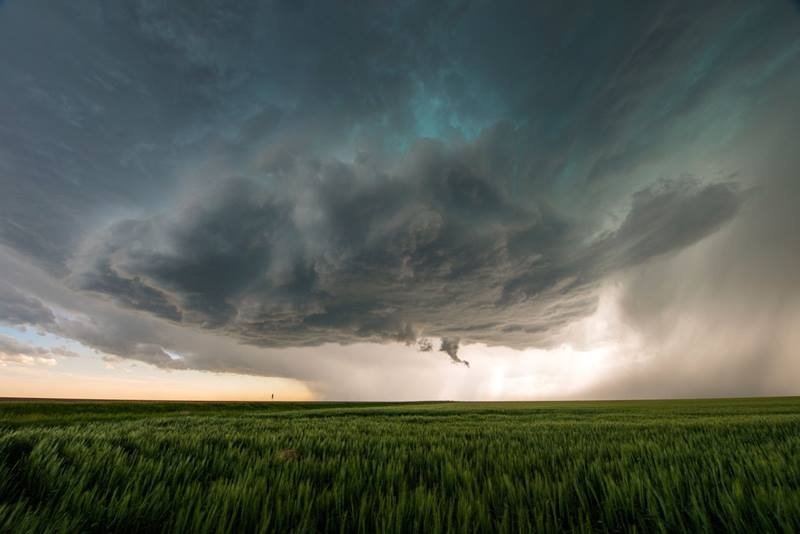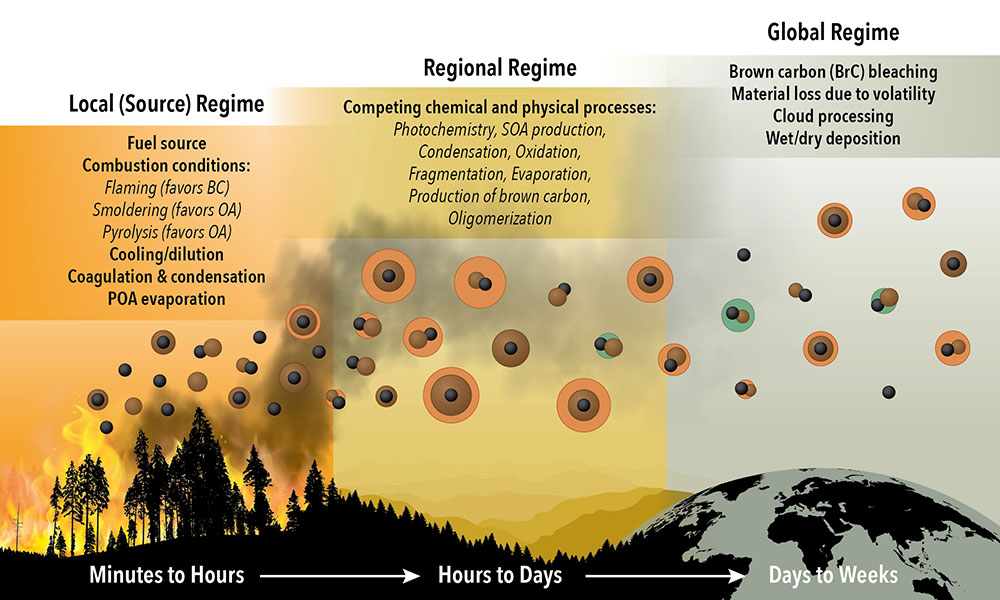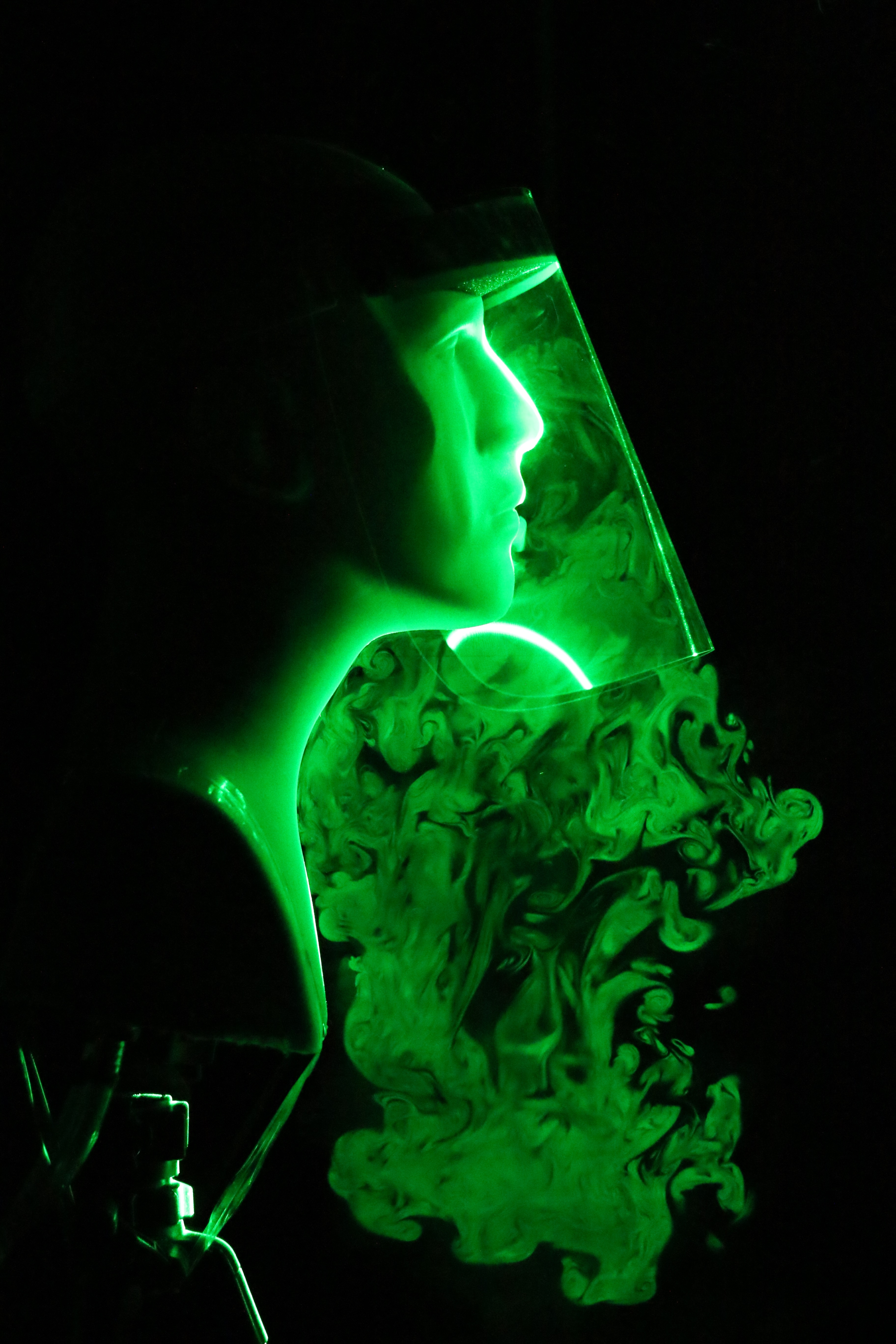Researchers will explore climate, pathogens and energy-efficient microelectronics using 3 million node hours on the nation’s supercomputers.
Tag: Aerosols
High-resolution Lidar Sees Birth Zone of Cloud Droplets
Scientists have made the first-ever remote observations of the fine-scale structure at the base of clouds. The results show that the air-cloud interface is a transition zone where aerosol particles suspended in Earth’s atmosphere give rise to the droplets that ultimately form clouds.
First Calibration Training at CAMS
Scientists from the Center for Aerosol Measurement Science (CAMS) at the U.S. Department of Energy’s (DOE) Brookhaven National Laboratory hosted the center’s first calibration activities on Nov. 30 and Dec. 1.
Preventing airborne infection without impeding communication with ions and electric field
Researchers in Tokyo developed a device using ions and an electric field to capture infectious droplets and aerosols, allowing communication while preventing airborne infection
Study: Atmospheric circulation weakens following volcanic eruptions
A new study in Nature has revealed that the Pacific Walker Circulation has changed its behavior over the industrial era in ways that weren’t expected.

A Day and Night Difference: Molecular Composition of Aerosols Differs from Day to Night
Aerosols particles in the atmosphere are an important factor in the Earth’s climate, but researchers lack information on these aerosols’ molecular composition, especially for aerosols during the day and night above agricultural fields. In this research, scientists examined secondary organic aerosols over agricultural fields in the Southern Great Plains in Oklahoma. They found that the aerosols’ composition and structure differ from day to night and that some aerosols are ultimately from urban sources.

Scientists Map Changes in Soot Particles Emitted from Wildfires
We need a better understanding of the particles emitted by wildfires, including how they evolve, so we can improve our predictions of their impacts on climate, climate change, and human health. Atmospheric scientists at Brookhaven National Laboratory and collaborating institutions recently published a study that suggests the global climate models aren’t getting the full picture. Their data could change that.

Ogo Enekwizu Brings Soot-seeded Clouds into the Laboratory
Tiny particles in Earth’s atmosphere can have a big impact on climate. But understanding exactly how these aerosol particles form cloud drops and affect the absorption and scattering of sunlight is one of the biggest sources of uncertainty in climate models. Ogochukwu (Ogo) Enekwizu is trying to tame that complexity by creating soot-seeded aerosol particles in a lab.
South Asian Black carbon aerosols accelerate loss of glacial mass over the Tibetan plateau
Black carbon aerosols are produced by the incomplete combustion of fossil fuels and biomass, and are characterized by strong light absorption.
Western Wildfires Spark Stronger Storms in Downwind States
A new study shows for the first time that wildfires burning in West Coast states can strengthen storms in downwind states. Heat and tiny airborne particles produced by western wildfires distantly intensify severe storms, in some cases bringing baseball-sized hail, heavier rain and flash flooding to states like Colorado, Wyoming, Nebraska, Kansas, Oklahoma, and the Dakotas.
New Review of Evidence Highlights Importance of Adequate Ventilation to Prevent Spread of Covid-19 in Indoor Settings
Some public venues may need better ventilation to prevent the spread of covid-19 following growing evidence of the potential for ‘long distance’ airborne transmission of the disease, suggests research published by The BMJ today.
PIRE Research Connects Air Pollution to Worst Taiwanese Drought in Nearly 60 Years
The study, published in the Journal of Atmospheric Chemistry and Physics, analyzed 13 years of satellite and surface to better understand how aerosols impact cloud lifecycle and precipitation during the autumn months over northern Taiwan.
Flushing a Public Toilet? Don’t Linger, Because Aerosolized Droplets Do
Because COVID-19 has been detected in urine and stool samples, public restrooms can be cause for concern. Researchers measured droplets generated from flushing a toilet and a urinal in a public restroom and found a substantial increase in the measured aerosol levels in the ambient environment with the total number of droplets generated in each flushing test ranging up to the tens of thousands. Due to their small size, these droplets can remain suspended for a long time.
Rutgers Expert Available to Discuss Coronavirus Risks a Year After Lockdowns Began
New Brunswick, N.J. (March 11, 2021) – Rutgers University–New Brunswick Professor Donald W. Schaffner is available for interviews on the likelihood of becoming infected by the SARS-CoV-2 coronavirus via shopping, groceries, surfaces and airborne/aerosol transmission after a year of lockdowns due to the global pandemic.…
Tiny Particles that Seed Clouds Can Form from Trace Gases Over Open Sea
New results from an atmospheric study over the Eastern North Atlantic reveal that tiny aerosol particles that seed the formation of clouds can form out of next to nothingness over the open ocean. Understanding the process will improve how aerosols and clouds are represented in models that describe Earth’s climate.

Four Rutgers Professors Named AAAS Fellows
Four Rutgers professors have been named fellows of the American Association for the Advancement of Science (AAAS), an honor given to AAAS members by their peers. They join 485 other new AAAS fellows as a result of their scientifically or socially distinguished efforts to advance science or its applications. A virtual induction ceremony is scheduled for Feb. 13, 2021.
Rutgers Expert Available to Discuss Coronavirus Risk from Surfaces, Groceries, Food, Airborne Exposures
New Brunswick, N.J. (Oct. 26, 2020) – Rutgers University–New Brunswick Professor Donald W. Schaffner is available for interviews on the likelihood of getting infected by the SARS-CoV-2 coronavirus via surfaces, groceries, eating food and airborne/aerosol transmission. “Current evidence still indicates that risk from surfaces remains…

Musical instruments don’t spread aerosols as far as you might think
A new study by University of Minnesota College of Science and Engineering researchers has found that wind instruments typically do not spread aerosols farther than one foot. The researchers suggest that mitigation strategies including social distancing, putting masks over instruments, and using portable filters can help reduce the risk of spreading COVID-19 on musical stages.

Face Shield or Face Mask to Stop the Spread of COVID-19?
If CDC guidelines aren’t enough to convince you that face shields alone shouldn’t be used to stop the spread of COVID-19, then maybe a new visualization study will. Researchers simulated coughing and sneezing from a mannequin’s mouth using a laser light to visualize droplets expelled. They tested a plastic face shield and found that they block the initial forward motion of the exhaled jet, however, aerosolized droplets are able to move around the visor with relative ease.
Environmental engineers study fabrics, materials for face covers
ROLLA, Mo. – The day before the federal government issued new recommendations that Americans wear cloth face coverings to help slow the spread of the coronavirus, a researcher at Missouri University of Science and Technology decided to test a few common household materials – pillowcases, scarves, furnace filters – “out of curiosity.